秋のケベック州(カナダ)②:/ ケベックシティの宿が大当たり!Quebec in Autumn (Canada)②: The accommodation in Quebec City was really big hit!

(黄色い網掛けが今回の旅程)
モントリオールからイースタンタウンシップを散策しながらケベックシティへ
入国直後にモントリオールで1泊した後は、車で260km離れたケベックシティへ。途中ハイウェイから少し南に寄り道して、紅葉とワイナリーで有名な湖水地帯イースタンタウンシップを散策。
From Montreal to Quebec City, exploring the Eastern Townships along the way
After spending the first night in Montreal upon arrival, we headed to Quebec City, 260 km away by car. On the way, we took a slight detour south from the highway to explore the Eastern Townships, a picturesque lake district known for its autumn foliage and wineries.
(English text continues to the latter half of the page)




これはメンフレ・マゴグ湖西岸に建つサン・ブノワ・デュ・ラック修道院。ベネディクト派の修道院で、その歴史は1919年からと新しいが、格子模様の回廊が美しく、隣接するリンゴ農園と牧場からの製品、特にラクトースフリーのチーズは広く知られている。建物の地下には観光客用の売店があり人気を博している。多くの観光客が出入りする名所だが、特に拝観料のようなものはないため、館内の喜捨ボックスに寄付をしてから帰る。


期待していた紅葉は、修道院の前でこの程度。今年は夏が長く気温が高かったために紅葉の盛りは10日ほどずれてしまったらしい。ちょっと残念な結果に。右の写真は修道院の前に植えられていたアジサイによく似た花。アジサイにはよく似ているものの、ほぼライムグリーンだし、葉の形状が独特なので別の種類なのかな。
イーストタウンシップの中心、マゴグ市で湖畔のレストランに立ち寄る。

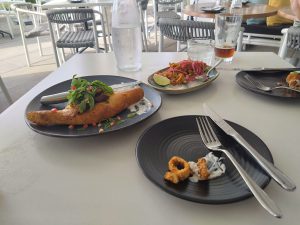

マスのフライとイカのフリットがラズベリービールにぴったり!カナダには10年以上前にバンクーバーやバンフといった英語圏を旅したことがあったが、食事についてはちょっと思い出したくないようなハズレにも出会った。ところが初めて訪れたフランス語圏では妙に美味しそうなものが食えそうな予感がこの時にしてきた。そしてその予感が滞在中に着実に実現化していく。
ケベックシティ対岸の宿が大当たり!
イーストタウンシップに寄り道した後は一路ケベックシティへ。メキシコ以北では唯一の城郭都市ケベックシティは欧州から北米大陸への物流の要、セント・ローレンス川沿いに開けた歴史的都市。1608年に建造された要塞シタデルを始め、1758年にイギリスがフランス勢力を支配下に置いたフレンチ・インディアン戦争の戦いが行われたアブラハム平原など、北米の歴史を彩る数々の史跡が存在する地域で旧市街は1985年にユネスコの世界遺産に指定されている。
この旅行でメインの目的にしたのも旧市街の散策だったので、最初は宿泊先を旧市街で探していた。ところがどこも高いうえにパーキングなどの条件が著しく悪い・・・。そこでふと思いついたのが、セント・ローレンス川の対岸にあるレヴィス(Levis)という街。観光地とは程遠い街ながら、川を挟んでフェリーも運行されているので、こちらに滞在して旧市街にはフェリーで渡ればいいんじゃないか。このふとした思いつきが想像以上の好結果を生んだ!
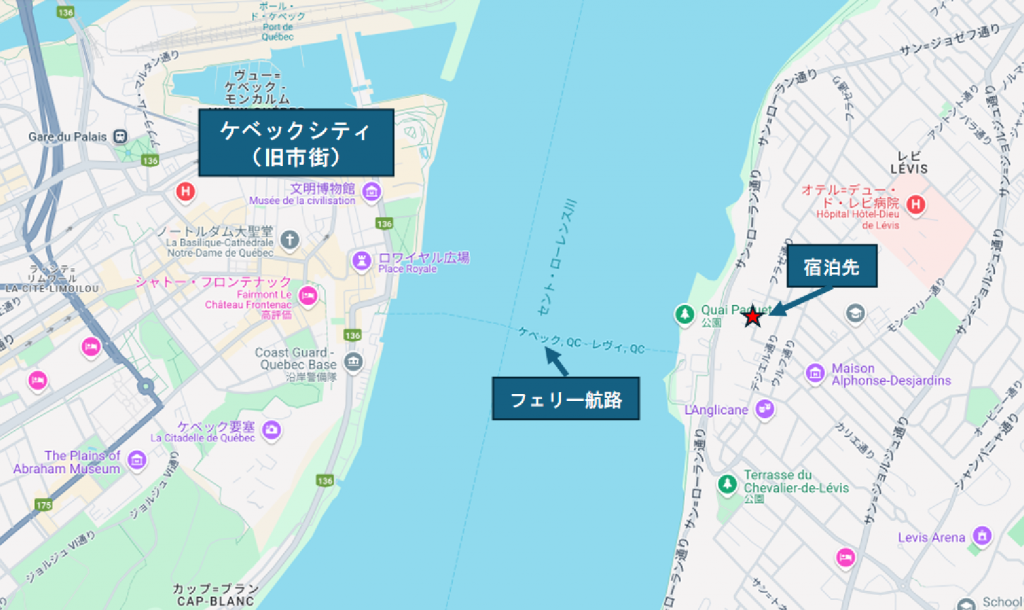
この地域でAirbnbから選んだのは、セント・ローレンス川を臨む崖の上に立つ青い屋敷の1階フロアを丸ごと借り切ったもの。




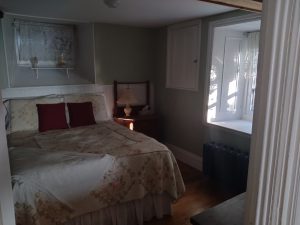


崖の斜面に建てられた家なので、表からは2階建てに見えるが裏に回ると3階建てになる。元は19世紀に土台が造られた屋敷らしい。この1階部分にはベッドルームが2つ、リビング、ダイニングキッチンがつき、ベッドはクイーンサイズが3台、家族連れなら5~6人は泊まれそうだ。これでルームレートは16,000円程度ときわめてリーズナブル。
さらに価値を高めているのが、裏庭からのビューだ。旧市街対岸の崖の上に位置しているだけに、ケベックシティ旧市街が目の前に。裏庭には大きなブランコも設置してあり、夕刻にここに座ってビールを飲みながら対岸の旧市街が黄昏れていくのを見つめている時間には、お金に換算できない価値がある。


ちなみにこの家には猫がもれなくついてきます。ご近所で飼われている猫ちゃんのようですが、毎朝、毎夕、遊びにきてくれました。
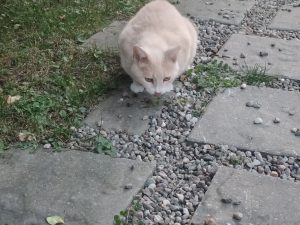

旧市街の散策:丘登りではけっこう消耗!
翌朝は朝一番でケベックシティの旧市街を訪れる。下の写真はフェリー乗り場から眺めた宿泊先(赤い階段の左に見える青い建物)。この写真で一目瞭然のように、宿から赤い階段を降りればすぐにフェリー乗り場だ。便利なことこのうえないが、散々歩き回って帰ってくると、この階段を昇るのはかなり辛い・・・

セント・ローレンス川を行き来するフェリーは早朝から深夜までほぼ1日中運航しており、往復で750円程度。このフェリーがないと、ケベックシティまで車で大回りして、朝の渋滞につかまれば1時間半くらいはかかるので、フェリーを使えるのは実にありがたい。

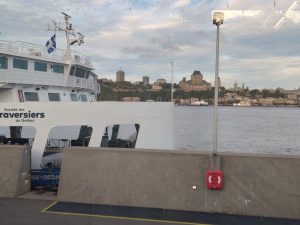

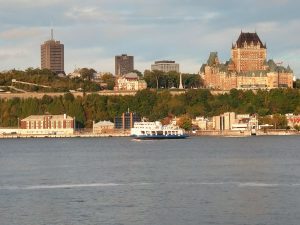
フェリーは車でも乗船できるのでかなり大きい。こちらの岸から出航すると、同時に向う岸からも同じ船体が出航する。対岸まで7、8分程度だが、船内には通勤のサラリーマンの朝食用途なのか、軽食とドリンクの自動販売機が並ぶ。
旧市街の麓に接岸したのは朝8時前。目の前には旧市街を頂上にいただく大きな丘がそびえている。観光客の多くは下の写真のケーブルカーに乗って丘の上に出るのだが、あいにく運行は9時から。街中の石段をひたすら昇ることに。
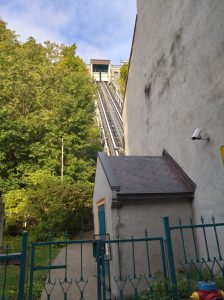

途中のビルや樹木には、巨大なピンクの赤ん坊が頂上を指さしている。そしてようやく丘の頂上にそびえたつ旧市街のランドマーク、シャトー・フロンテナックに到着。


現在は600室を擁する高級ホテルとして使われているこの建物は、17世紀後半から建設が始まり、特に19世紀後半からシャトーエスク様式の建築が進み1893年から高級ホテルとして開業した。歴史遺産のシタデル要塞に隣接し、対岸からもくっきりと見えるケベックシティのランドマーク。アルフレッド・ヒッチコック監督の「私は告白する(I confess)」(1953年)の舞台になったところでもある。


丘の上に出てまず向かったのがクレープで朝食がいただける「Casse-Crepe Breton」、ここではクレープの中にお好みの肉や野菜、果物を包み込んで焼いてもらえる。欲張って中身を入れ過ぎてしまったけど、これはかなりの美味で、他では食べられない味だった。

朝食を済ませた後、すぐ目の前のノートルダム大聖堂へ。現在の建築は1925年のものだが、もともとは1647年に創設された聖堂でその後、破壊と再建を繰り返してきたケベック州のカソリックの拠点。本当は地階のガイドツアーに参加したかったけど、10日前のレーバーデーを最後にガイドツアーはシーズン終了だった。9月も下旬になると観光シーズンのピークから外れてしまうようだ。


しかしそれにしても街中にはさりげなく様々なアートが溢れている。ここら辺がフランス語圏の匂いかも知れない。


夕方まで歩き回ってから再びフェリーに乗って対岸のレヴィに戻る。宿までの長い登り階段が大変な苦行になった。

From Montreal to Quebec City, exploring the Eastern Townships along the way
After spending the first night in Montreal upon arrival, we headed to Quebec City, 260 km away by car. On the way, we took a slight detour south from the highway to explore the Eastern Townships, a picturesque lake district known for its autumn foliage and wineries.




This is the Abbey of Saint-Benoît-du-Lac, located on the western shore of Lake Memphrémagog. A Benedictine monastery, its history dates back to 1919, though relatively new. The beautiful lattice-patterned cloister is particularly stunning, and the products from the neighboring apple orchards and farms, especially lactose-free cheeses, are widely recognized. A gift shop for tourists is located in the basement of the building, which has become quite popular. While it’s a well-known tourist destination with many visitors, there are no formal entrance fees. Visitors typically make donations at the onsite donation box before leaving.


The fall foliage we had anticipated was only at this level near the monastery. It seems that due to the long summer and high temperatures, the peak fall colors were delayed by about 10 days this year, which was a bit disappointing. The photo on the right shows a flower that resembles hydrangeas, but although it looks quite similar, it’s almost lime green, and the unique shape of the leaves suggests it may be a different variety.
We then stopped at a lakeside restaurant in the center of the Eastern Townships, in the town of Magog.



Fried trout and calamari fritters pair perfectly with raspberry beer! I had traveled to English-speaking regions like Vancouver and Banff over a decade ago, but my memories of the meals were not always pleasant—encountering some misses. However, upon visiting the French-speaking region for the first time, there was an inexplicable sense that I might be able to taste something delicious. And throughout my stay, that sense continued to steadily materialize into reality.
Staying across the river from Quebec City turned out to be a great find!
After detouring through the Eastern Townships, we headed straight to Quebec City. Quebec City, the only fortified city north of Mexico, is a historic city that developed along the Saint Lawrence River, a key logistics hub between Europe and North America. With landmarks like the Citadel built in 1608 and the Plains of Abraham, where key battles during the French and Indian War took place in 1758 when the British took control from the French, Quebec City’s Old Town is rich in North American history. The Old Town was designated a UNESCO World Heritage site in 1985.
Since exploring Old Town was the main purpose of this trip, I initially looked for accommodations within the Old Town itself. However, the high prices and poor conditions, such as limited parking, made it nearly impossible. That’s when the idea struck: staying in Lévis, a town on the opposite side of the Saint Lawrence River. Though far from the tourist areas, Lévis has a ferry that runs regularly to Quebec City. Staying in Lévis and using the ferry to cross the river turned out to be an unexpectedly great decision!

The Airbnb I chose in this area was a full floor of a blue house perched atop the cliffs, overlooking the Saint Lawrence River.







The house, built on the slope of the cliffs, appears to be two stories from the front, but turns out to be three when viewed from the back. It is said to be a mansion dating back to the 19th century. The ground floor features two bedrooms, a living room, and a dining kitchen, with three queen-sized beds, comfortably accommodating 5 to 6 people, making it an exceptionally reasonable choice at around 16,000 yen per night.
What truly enhances its value, however, is the view from the backyard. Being situated on the cliffs overlooking Old Quebec City, the view of the historic Old Town from the backyard is simply stunning. A large swing is also set up, making it the perfect spot to sit and watch the Old Town gradually fade as the sun sets drinking beer, a moment that holds immeasurable value beyond any price tag.


By the way, this house comes with a cat included. It seems to be one of the neighborhood cats, as it visited us every morning and evening, always eager to play.


Exploring Old Town Quebec: Quite Exhausting Climbing Hills!
The next morning, I visited Old Town Quebec City bright and early. The photo below shows the accommodation (the blue building on the left of the red stairs) as viewed from the ferry terminal. As is clear from this photo, the ferry terminal is just a short walk down the red stairs from the accommodation—convenient beyond measure. However, after a full day of walking and exploring, climbing those stairs on the way back became quite challenging.

The ferry that crosses the Saint Lawrence River operates almost all day, from early morning to late at night, with a round-trip cost of around $CA 7.5. Without this ferry, reaching Quebec City by car would require a significant detour, and getting caught in morning traffic could take around 1.5 hours. Having the ferry available is truly a lifesaver.




The ferry, which can accommodate cars, is quite large. As it departs from this side, a similarly large ferry departs from the opposite shore at the same time. The crossing to the other side takes about 7 to 8 minutes, and onboard, there are vending machines offering light snacks and drinks, likely catering to commuter use.
The ferry docks near the base of Old Town just before 8 a.m. In front of us, a large hill rises, crowned by Old Town itself. Many tourists take the cable car (pictured below) to reach the top, but unfortunately, it doesn’t operate until 9 a.m. So, we had no choice but to climb the steep stone steps through the city.


Along the way, large pink baby figures point towards the top of the hill on buildings and trees. Finally, we arrive at the summit, where the iconic Château Frontenac, the landmark of Old Town, stands majestically.


This building, now a luxury hotel with 600 rooms, began construction in the late 17th century. Particularly in the late 19th century, its Châteauesque-style architecture developed, and it officially opened as a luxury hotel in 1893. Adjacent to the historic Citadel fortress, it remains a prominent landmark of Quebec City, clearly visible from the opposite shore. It was also the setting for Alfred Hitchcock’s ‘I Confess’ (1953).


Upon reaching the top of the hill, our first stop was ‘Casse-Crêpe Breton,’ a spot where you can enjoy breakfast crêpes filled with your choice of meat, vegetables, or fruits. I went a bit overboard and stuffed mine too much, but the result was incredibly delicious—flavors you can’t find anywhere else.

After finishing breakfast, I headed straight to the Notre-Dame Cathedral, located right in front. While the current building dates back to 1925, the cathedral was originally founded in 1647 and has undergone several destructions and rebuilds over the centuries, serving as the Catholic center of Quebec Province. I had hoped to join a guided tour of the crypt, but unfortunately, they ended for the season after Labor Day ten days prior. It seems that by late September, the peak tourist season is already winding down.


Still, there’s an abundance of subtle art scattered throughout the city—perhaps a reflection of its French-speaking roots.


After wandering through the city until evening, I took the ferry back to Lévis across the river. The long climb up the steep stairs to our accommodation was a real struggle.
